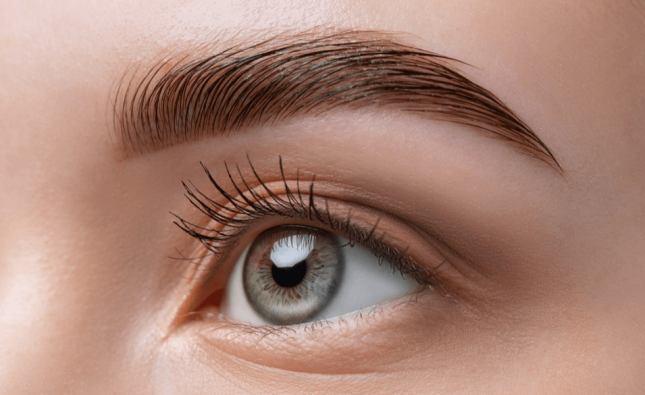
Are you tired of slathering on sunblock every time you step out into the sun? Do you know that not using SPF can cause premature aging and even deadly skin cancer? Fear not, because we’re here to tell you everything about SPF – the ultimate protector of your skin against harmful UV rays. In this blog post, we’ll bust myths surrounding SPF and explain why it’s crucial to incorporate it into your daily routine. So sit back, grab a drink, and let’s dive in!
What is SPF and how does it work?
SPF, or sun protection factor, is a measure of a sunscreen’s ability to protect your skin from the sun’s harmful UV rays. The higher the SPF, the greater theprotection. SPF is measured by applying sunscreen to skin that has been exposed to UV rays and then measuring the amount of time it takes for the skin to turn red.
SPF works by reflecting and scattering UV rays away from the skin. There are two types of UV rays: UVA and UVB. UVA rays penetrate deep into the skin and can cause premature aging, while UVB rays are responsible for causing sunburns. Both types of UV rays can contribute to skin cancer.
While no sunscreen can completely block all UV rays, using one with a high SPF can help reduce your risk of skin cancer and other harmful effects of sun exposure.
The different types of SPF
SPF, or sun protection factor, is a measure of a sunscreen’s ability to protect your skin from the sun’s harmful ultraviolet (UV) radiation. There are two types of UV radiation: UVA and UVB. UVA rays are the main cause of premature aging and skin cancer, while UVB rays are the main cause of sunburns. SPF measures the amount of time it takes for your skin to develop redness from UVB exposure. For example, if you use an SPF 15 sunscreen, it will take 15 times longer for your skin to become red than if you were not using any sunscreen at all.
The different types of SPF available on the market today can be confusing. Here is a breakdown of the most common SPFs so that you can make an informed decision about which one is right for you:
-SPF 15: This is the minimum level of SPF recommended by dermatologists. It blocks 93% of UVB rays.
-SPF 30: This is a good choice for everyday sunscreen use. It blocks 97% of UVB rays.
-SPF 50: This is ideal for extended sun exposure, such as during outdoor activities or when spending time at the beach. It blocks 98% of UVB rays.
-SPF 100: This provides the highest level of protection against UVB rays, blocking 99% of them.
The benefits of using SPF
There are many benefits of using sunscreen with SPF, or sun protection factor. SPF is a measure of how well a sunscreen will protect your skin from the sun’s ultraviolet (UV) rays. The higher the SPF, the more protection the sunscreen offers.
SPF is important because it helps to prevent sunburns, premature aging of the skin, and skin cancer. According to the Skin Cancer Foundation, “One in five Americans will develop skin cancer in their lifetime.”
Sunscreen with SPF can help to prevent these harmful effects by blocking out UV rays. When choosing a sunscreen, it is important to look for one that has an SPF of at least 30 and is water-resistant.
The best way to apply SPF
When it comes to sunscreen, there are a lot of options out there. But which one is right for you? And how do you even apply it properly?
Don’t worry, we’re here to help. When it comes to choosing a sunscreen, you want to make sure it has an SPF (sun protection factor) of at least 30. This will help block out 97% of the harmful UV rays from the sun.
As for applying sunscreen, you want to make sure you do it correctly in order to get the most protection possible. Here’s how:
-Apply sunscreen 15-30 minutes before going outside. This will give it time to soak into your skin so it can start working its magic.
-Be generous with your application. You should use about 1 ounce (or enough to fill a shot glass) of sunscreen for your whole body.
-Make sure to reapply every 2 hours, or more often if you’re swimming or sweating heavily.
How often should you reapply SPF?
When it comes to reapplying SPF, the general rule of thumb is to reapply every two hours. However, there are a few factors that can affect how often you should reapply. These include activity level, whether you’re sweating or not, and time spent in water.
If you’re active and sweating, you’ll need to reapply more often than if you’re just hanging out in the sun. And if you’re swimming or spending time in water, you’ll need to reapply as soon as you get out. Water can remove sunscreen from your skin, so it’s important to make sure you put it back on.
No matter what, always make sure to reapply sunscreen after towel drying off or swimming. And remember, even if you don’t feel like you need to reapply because you haven’t been sweating or in the water, it’s better to be safe than sorry. The sun can do damage even when you don’t feel like it’s affecting your skin, so always err on the side of caution and apply sunscreen regularly throughout the day.
The dangers of not using SPF
When it comes to protecting your skin from the harmful effects of UV radiation, sunscreen is absolutely essential. Unfortunately, far too many people neglect to use sunscreen on a regular basis, and this can lead to some serious health problems down the line. Here are just a few of the dangers of not using sunscreen with SPF:
1. Skin Cancer: UV radiation is one of the leading causes of skin cancer, and using sunscreen is one of the best ways to protect yourself from this disease. If you don’t use sunscreen, you’re putting yourself at a much higher risk for developing skin cancer later in life.
2. Premature Aging: In addition to causing cancer, UV radiation can also cause premature aging of the skin. If you want to keep your skin looking young and healthy, it’s important to use sunscreen on a daily basis.
3. Sunburns: Of course, one of the most immediate dangers of not using sunscreen is sunburn. Even if you don’t get burned badly enough to develop blisters, sunburns can be extremely painful and uncomfortable. They can also increase your risk for developing skin cancer later on.
4. Eye Damage: The sun’s UV rays can also damage your eyes, causing conditions like cataracts and macular degeneration. Wearing sunglasses and using sunscreen around your eyes is crucial for protecting your vision.
5. Overall Health Risks: Finally, it’s important to remember that the sun’s
Conclusion
SPF is the ultimate protection against harmful UV rays, and it should be part of everyone’s daily skincare routine. While there are many factors that can impact your skin’s health, applying a high-quality sunscreen every day can help protect your skin from sun damage and premature aging. So make sure to grab some SPF whenever you go out in the sun – your skin will thank you!










